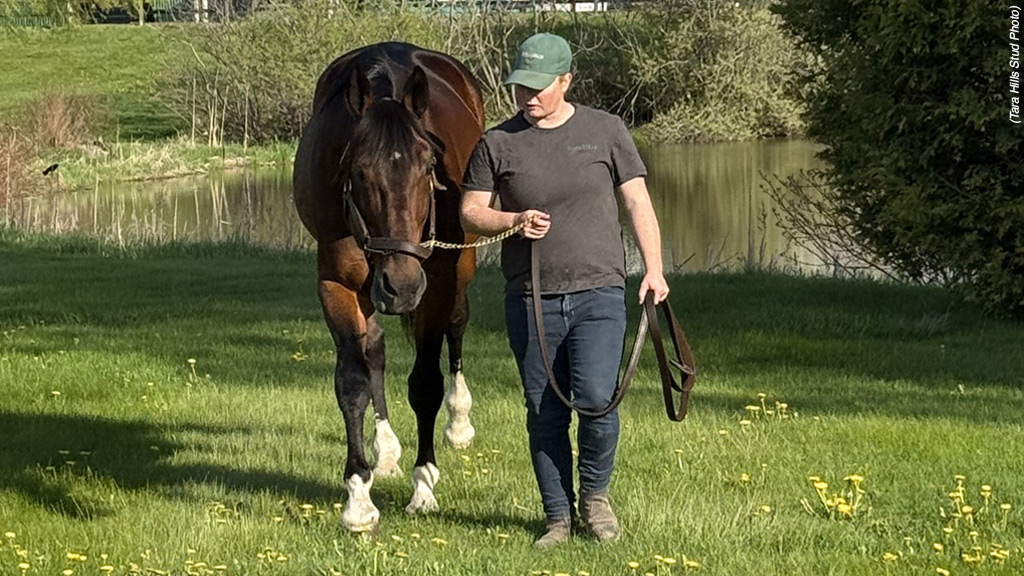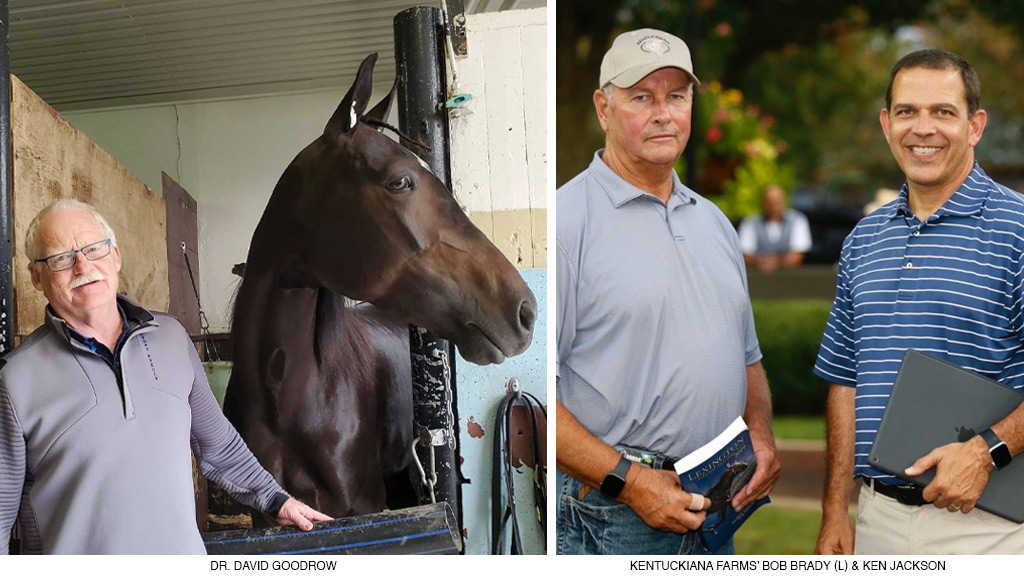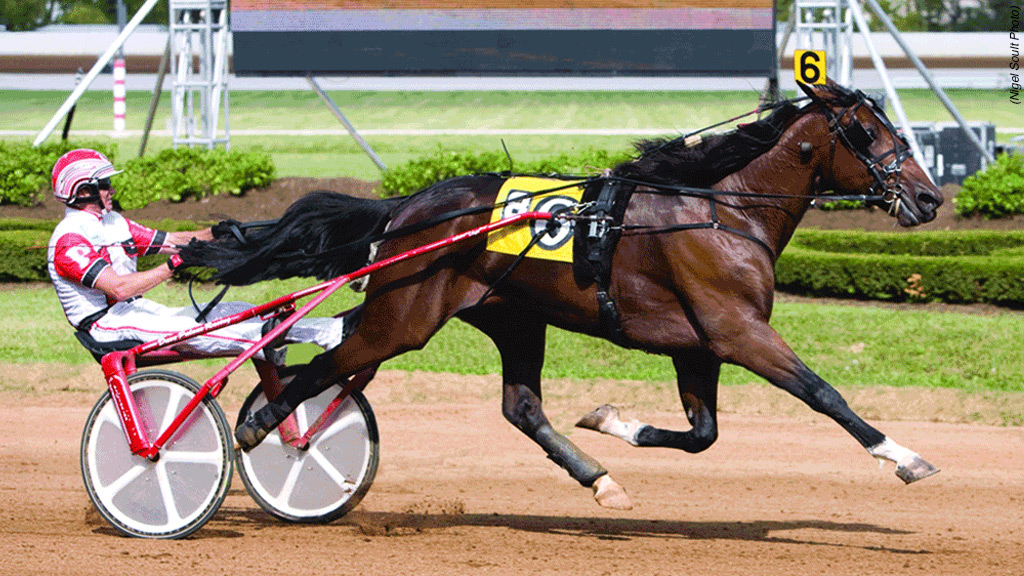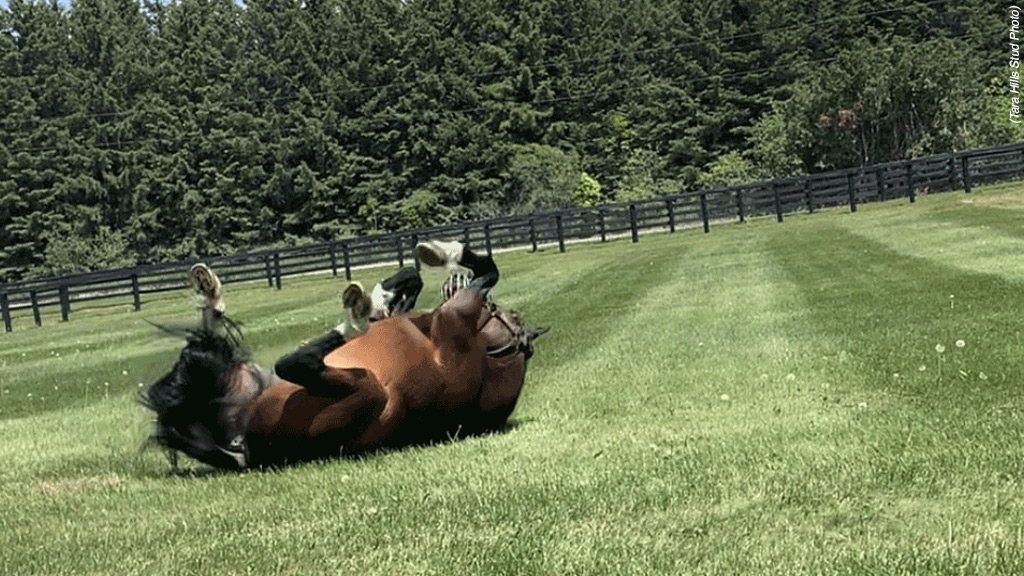An undefeated World Champion at age two, Muscle Mass looked to be on his way to a stallion career for certain, but after an injury derailed his sophomore season, his future lay a bit more in-doubt. Enter the late Canadian Vet, Dr. David Goodrow, who had all the faith that the horse was a perfect fit for Ontario’s stallion ranks. He convinced his friends at Kentuckiana Farms to join him, and over 16 years later, a week before Doc Goodrow’s untimely passing, in April, 2025, it was announced that the horse he believed in so much would now be called a Hall Of Famer.
By Dan Fisher.
On Tuesday, May 13th, Major League Baseball Commissioner, Rob Manfred, announced that he was changing the league’s policy on permanent eligibility, saying lifetime bans from the sport would expire after death, and in essence, making Pete Rose once again eligible for Cooperstown. The announcement was met with joy by the fans of the MLB all-time hits leader, but it also came some seven months after his death, so many were also saddened that ‘Charlie Hustle’ never got to know, and that if he does get inducted back into the Hall Of Fame, he won’t be around to attend. On August 6, 2025, Muscle Mass, one of the greatest trotting stallions in the history of Standardbred racing, will be rightfully enshrined in the Canadian Horse Racing Hall Of Fame, and sadly, the man who may have been the most important person behind making this happen, won’t be in attendance at this induction either. Dr. David Goodrow was that man, but he passed away on April 30, 2025. The only small consolation to David’s friends, family and those closest to the horse, was that the Class of 2025 was announced on April 23rd, so unlike Mr. Rose, Dr. Goodrow, at least, was able to hear the good news before his untimely passing.

When Ken Jackson of Kentuckiana Farms hears the question, ‘Basically, if it weren’t for Dr. David Goodrow, the hall of fame stallion career of Muscle Mass, probably wouldn’t have happened?’, he clearly jumps in to make a correction.
“No. There’s no ‘probably’ about it,” he clarifies. “If it wasn’t for David Goodrow, we would never have purchased the horse and stood him in Ontario. He was the man completely behind the original idea.
“I mean, we liked the horse at age two - he was an undefeated World Champion through seven starts… Erv Miller trained him and we’ve always had a great relationship with Erv. He’s bought horses from us forever, and we had just begun standing Lis Mara, who Erv trained as well, the year before.
We always had a great relationship with David Goodrow too,” Jackson shares. “Some of his mares are still on our farm today.”
“Dave Goodrow had anywhere from 8 to 12 of his mares with us forever,” added Kentuckiana’s Bob Brady - Jackson’s brother-in-law. “Eventually, he got rid of a bunch of them, but looking back, Doc Goodrow was a great part of our lives for the past 35 years. We’re very sad to have lost him,” Bob related in a somber tone.

“Before the 2008 Harrisburg Mixed Sale,” explains Jackson, “Doc Goodrow approached us in regard to buying this horse [Muscle Mass] and standing him in Ontario. He said he loved the horse, that he had a ton of ability and a very deep pedigree on the maternal side. He really thought he’d be a good fit in Ontario and asked us if we’d be interested in buying him together if we could get him for the right price.
“We looked him up more closely, at all the details… Perretti Farms and Barry Guariglia of Black Horse Racing owned him. As I reflect back I honestly can’t remember if there was any communication with Barry at the time - I might have spoken to him but I can’t remember,” Jackson tried to recall.
“Suffice it to say that, in the end, David Goodrow was instrumental in, and excited about trying to buy this horse and stand him at stud. He also had a partner who was interested, in Kjell Andersen. So Bob and I were in, as was the farm [Kentuckiana]... I brought in a few of our Thoroughbred guys, Tony Holmes and Walter Zent… Tony also owned a lot of the Guccio [Standardbred] family. Then Erv [Miller] and his big buyer, John Carver, came in, along with Dave and Kjell of course.
“We all left the sale after agreeing that we’d go to half-a-million dollars on him when he sold on the Saturday. I would do the bidding over the phone, through Mario Zuanetti, who stayed at the sale. So I was at the UK [University of Kentucky] football game, and five or six horses before he [Muscle Mass] sold, I got on the phone with Mario - he was there, at Harrisburg, in the back ring.
“I remember, I was in at four-ninety [$490,000] against an owner - a stallion farm - from Indiana, and they hit him to five-hundred [$500,000] (laughing), which was our limit. I said to Mario, ‘Damn, these f-in guys won’t quit. Maybe we’ll go one more time, and see if we can run them off… let’s bump them to five-twenty and just get it over with’ (laughing), and we got him for that… they quit,” laughed Jackson.
Muscle Mass sold as Hip #2235, to the group inspired by the Canadian vet, Dr. David Goodrow, for $520,000 USD.
“We immediately syndicated him for north of $1 million in total, and had half the horse sold out within about the next two weeks, to a great group of syndicate members,” shared Ken.
“Another interesting thing about the deal,” Bob Brady added, “was that Muscle Mass was actually turned out with us, at Kentuckiana, after his two-year-old year. I believe they removed a chip from one of his knees and sent him to us for rehab and turnout… so I guess we did know the horse a little. I believe it was that knee that prevented him from racing much at three, but they sure couldn’t beat him as a two-year-old.”
It was also interesting that the horse had been bred, and was owned in-part, at ages two and three, by Perretti Farms, who stood stallions like Rocknroll Hanover and Muscles Yankee at the time. Why didn’t they just keep him and stand him?
“Maybe they just thought he’d just be a lower-end stallion,” suggested Brady, “and they were more into high-end stuff at the time? I’m not sure to be honest.”
“We first stood him for $5,000 [CDN] with Pat and Anna Meyers at Emerald Ridge Farms - they had a number of our Ontario stallions at that time,” recalls Jackson.
“You know, it should be said that we had just come off of doing some genetic studies down here, and we were trying to encourage the USTA to limit stallion bookings at 140 [mares]... even though that wasn’t the rule up in Canada, we did cut off his book at 140 every year because we felt it would be hypocritical to do otherwise,” Jackson reasoned.
Muscle Mass stood in Ontario for the next four seasons, breeding anywhere between 131 and 137 mares each year, and was a huge success. His top performers from those first four crops consisted of: Motown Muscle (1st crop - $460,433), Riveting Rosie (2nd crop - $973,336), Rubber Duck (3rd crop - $676,049) and Muscles For Life ($575,031).

Then, however, dark times hit racing in Ontario when the government cancelled the horsepeople’s portion of the Slots At Racetracks Program, and the book on Muscle Mass breedings plummeted to just 96. His richest performer from that crop would prove to be the brilliant filly, On A Sunny Day ($700,311), but by the time her career started, her dad had gone south, to stand at Blue Chip Farms in New York.
“We really didn’t want to move him,” lamented Brady, “but racing had been hit hard there [Ontario], his number of mares dropped significantly, and that’s what the syndicate voted to do. It was really a tough time for everyone looking back,” he said, “but we did realize that Canada had always been really good to him.”
“So we moved him to New York,” Jackson continued, “and the first year he got a really solid book - 117 mares. But the second year they didn’t support him, and he dropped to just 74. We said, ‘Forget this’... Ontario had turned things back around, and in September of 2015 we announced that he was going to Tara Hills Stud in Ontario.
“He left Ontario as the leading stallion and went to New York, to be the leading stallion with his first crop there,” beamed a proud Ken. “We didn’t move him back for any other reason except that New York didn’t support him in that second year, and Canada always had.”
“Some people forget,” added Brady, “that his first crop of two-year-olds in New York [led by Six Pack; $1.9 million, and Plunge Blue Chip; $1.5 million] out-earned the Chapter Seven two-year-olds that year.”
“It was just the right thing to do though,” Bob insisted. “He had always been supported and appreciated in Canada, and once things there got straightened away we were happy to send him back.
“You know, we stood Western Terror in Ontario for his first two seasons,” Brady continued, “and he was really supported well too [190 mares in 2005 and 160 mares in 2006]. David Brooks’ people had us move him to the U.S. after that, against our wishes, and that always bothered me. Canada has always meant a lot to Kentuckiana,” Bob stated emphatically, “and Muscle Mass has been a big part of that relationship.”
“We did shuttle this stallion to the Southern Hemisphere once… in 2012, for their 2013 breeding season,” inserts Jackson. “At one point he was the leading trotting stallion down there too. In fact, you know, basically every jurisdiction that he went to, he became the leading stallion,” Ken says with a smile.
“He’s had some Grade 1 winners in Europe too, although he hasn’t had a lot of progeny race there, but he’s been the leading trotting sire Down Under, in New York and for many years in Ontario, and it’s something we’re all quite proud of,” he stated.
He’s not wrong either.
Muscle Mass has been the overall leading trotting sire in the Ontario Sires Stakes program six different years, including for the past five in a row. His two-year-olds led the way in the NYSS program in 2017, with over $400,000 more in earnings than Chapter Seven’s two-year-olds that same year, and his freshman trotters were at the top of the table in New Zealand and Australia in both 2015 and 2016.
On top of the $84.5 million in North American progeny earnings that the son of Muscles Yankee - Graceful Touch boasts here - an average of $95,909 per starter - a look at the harness racing websites of Australia and New Zealand will show you another $6.5 million in earnings from the limited number of starters in those countries as well.
He’s hit a home run everywhere he’s been.
“We only sent him Down Under that one year though,” explained Ken. “Nothing against anyone involved, but due to the circumstances he found himself in during the time he was there, let’s just say that he developed some unacceptable personality traits while he was away. It wasn’t good. He came back as a really nasty individual, and it was really troubling. For some time after that he basically had to live with a muzzle on… even when he was alone and not around people or other horses.
“It didn’t happen overnight,” Jackson went on to share, “but I have to say that the job David Heffering and his team at Tara Hills have done on that horse has been nothing short of remarkable. He doesn’t wear the muzzle any longer, and he’s just like a baby to be around. We just can’t say enough good things about Dave and his team.
“There have still been some breedings in Australasia and in Europe. He lives at Tara Hills year-round now but Matt Harrison, I believe it is, would shuttle him down to Select Breeders in Maryland every winter, so they could collect and freeze his semen for export. I know a guy there, at Select Breeders,” Jackson said with a laugh, “and the first time we sent him there I warned him that he [Muscle Mass] could get a bit nasty. He called me back a while later, surprised, and told me that he was actually one of the nicest stallions that he had ever been around.
That’s all because of David and his team,” says Ken.
At Tara Hills Stud, in Port Perry, Ontario, David Heffering and company truly appreciate Muscle Mass and their partners at Kentuckiana, just as much as the Kentuckiana folks appreciate them.

“I always liked the horse when he was in Ontario those first number of years,” stated Heffering, “and when the Kentuckiana guys called me to say they were bringing him back from New York we were happy to take him.
“We were lucky here [at Tara Hills] that for a lot of years early on [1996-2015] we had Mr Lavec. He helped put us on the map. Then, along came Kadabra [2004-2020]. Those two trotting stallions were huge for us.
“I always knew that someone would have to take Kadabra’s spot,” David reasoned. “He’d get a little sore behind sometimes, and we always knew that would eventually become a bigger issue when it came to his ability to produce. So when Muscle Mass came along [for the 2016 breeding season] we hoped he’d be the heir-apparent, so-to-speak, and he’s never let us down.
“When we got him [Muscle Mass] he definitely had some behavioural issues… he had to wear the muzzle and everything,” Heffering explained, “but I really have to give a ton of credit to Pat Lang and Marissa Tinney in that regard. Pat worked so much with him, before he retired, and Marissa, who is our Stallion Manager now, has just worked wonders with him as well.
“Everyone here has done so much with him,” the proud owner of Tara Hills Stud relates, “but those two individuals especially.
“You know, Kadabra always had the first stall in the barn. He was the first one to greet you when you walked into the barn in the morning, and he deserved that spot. After he died [in March, 2021] we left that stall empty for about a year… I just thought it was the right thing to do. Then one day we all discussed it as a group, and we decided that Muscle Mass deserved to be in that stall, so it became his new home, and he’s been living in it ever since.
“There’s no doubt that he’s very special to us here,” said Heffering.
And the treatment the big horse with the four white feet gets is special too.
“Yes,” David says with a chuckle, “we got him his own Bemer blanket, and the chiropractor comes in and works on him once a month - twice a month in the winter. He deserves it though. His fertility is great, and he breeds a lot of mares each year. He’s excellent at his job, but by the time the season is coming to an end you can tell he’s had enough. We just give him all of the extra perks to try and keep him feeling good and fresh all year long, and it seems to be working,” smiles Heffering.
New Tara Hills trotting stallion, Green Manalishi, had a strong first crop race in 2024, and his contemporary, King Of The North, has served full books of mares in his first few seasons as well. When asked about Muscle Mass, in regard to the new trotting stallions on the scene, and others that have come and gone, Heffering put it like this:
“It’s a fickle game. Everyone always wants the next new thing to come along when it comes to stallions. It’s a true testament to Muscle Mass that he’s still here, and that he’s still on top. I look at him like he’s a Chevy Truck - built like a rock, dependable, reliable, and always there for you, day-after-day. That’s kind of rare in this business.”
This feature originally appeared in the June issue of TROT Magazine. Subscribe to TROT today by clicking the banner below.



Muscle Mass
Love hearing stories about the Great Horses..Just brings a smile to eveyones face I am sure. Bruce Marshall Avid standardbred racing fan